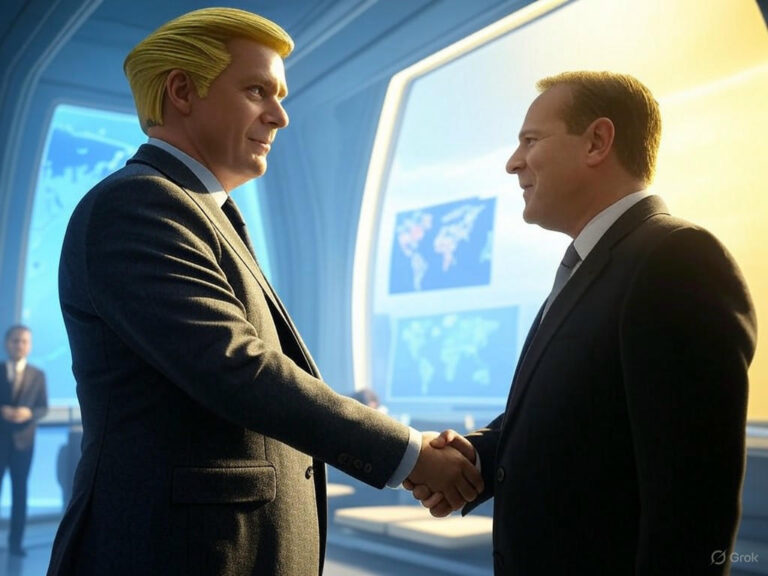
Military Rank Cuts: Hegseth Slashing 20% of 4-Star Billets
Defense Secretary’s Military Cuts: A Bold Overhaul
Imagine leading a massive organization like the Pentagon and deciding it’s time to trim the excess at the top. That’s exactly what Defense Secretary Pete Hegseth is doing with sweeping military cuts that promise to reshape how our armed forces operate. In a memo signed on May 5, 2025, he’s ordering a 20% reduction in four-star general positions across active-duty ranks, marking one of the most significant shifts in military leadership in decades. This move isn’t just about numbers; it’s about creating a more agile force focused on real battlefield readiness rather than layers of bureaucracy.
These military cuts extend beyond the top brass, affecting the National Guard with similar reductions and mandating a 10% cut in general and flag officers from one-star up. If you’re wondering why this matters, think about how fewer high-ranking officials could speed up decision-making and put more resources toward the troops on the ground. What might this mean for America’s defense strategy in an unpredictable world?
The Scale of These Military Cuts
The U.S. military currently boasts around 800 general officers, including about 44 four-star generals—numbers that have grown as global responsibilities expanded. Now, with these targeted military cuts, we’re looking at a major downsizing of senior leadership, as Hegseth calls out “redundant force structure” and “unnecessary bureaucratic layers.” It’s a stark reminder that more isn’t always better, especially when it comes to efficiency on the front lines.
Hegseth draws a powerful historical parallel: during World War II, just seven four-star generals helped secure victory, yet today we have far more. Military cuts like these aim to flip that script, emphasizing that a leaner structure could lead to stronger outcomes. Have you ever thought about how excessive administration might slow down responses in critical situations?
As an example, consider a hypothetical scenario where quick decisions saved lives in a conflict zone—fewer layers could make that a reality. This approach isn’t just theoretical; it’s backed by Hegseth’s vision for a more effective military.
Broader Impacts of Military Cuts on Pentagon Transformation
These military cuts are just one piece of a larger puzzle. Last week, Hegseth directed a comprehensive Army overhaul to “build a leaner, more lethal force,” which includes merging headquarters, phasing out outdated equipment, and cutting up to 1,000 Pentagon staff. It’s all part of the Trump administration’s push for government efficiency, even involving figures like Elon Musk in streamlining efforts.
If you’re tracking defense policy, this aligns with a broader trend of reducing waste across federal agencies. But what could this mean for everyday service members? Perhaps more funding for training and tech innovations, rather than administrative overhead.
Vision and Justification Behind the Military Cuts
Hegseth’s memo paints a clear picture: military cuts are essential for fostering innovative leaders without the drag of red tape. He argues that the Department of Defense needs to cultivate senior officers who can drive operational excellence and keep America as the world’s premier fighting force. In his words, it’s about “achieving peace through strength” by focusing on efficiency and preparedness.
This isn’t merely administrative; it’s a strategic shift that could redefine military culture. For instance, if you’ve followed past reforms, you know that empowering lower ranks often leads to better morale and faster adaptations on the battlefield. How might these changes influence future conflicts?
Concerns and Criticisms of the Military Cuts
While proponents see these military cuts as a win for efficiency, not everyone is on board. Critics worry that slashing leadership roles could politicize the military or weaken its diversity and inclusivity efforts. Under Hegseth, we’ve already seen removals of key figures, including women in high ranks, raising questions about potential biases.
Take a moment to consider: could these cuts inadvertently affect recruitment or unit cohesion? It’s a valid concern, especially as the Pentagon also moves to enforce stricter fitness standards and scale back diversity programs. Yet, if handled right, this could be an opportunity to build a more unified force.
Historical Context and Future of Military Cuts
Looking back, the growth in senior military positions has mirrored the U.S.’s expanding global role over the decades. Hegseth’s push for military cuts harks back to simpler times, like World War II, when fewer generals delivered big results. This historical lens helps frame why now might be the time for change, potentially leading to a more responsive command structure.
One potential next step involves tweaking the Unified Command Plan, which could result in even more reductions. If you’re interested in defense strategy, this evolution might inspire you to think about how organizations adapt over time. For actionable advice, military enthusiasts could study these reforms to advocate for similar efficiencies in other sectors.
Implementation and Timing of the Military Cuts
With the memo in place, the real work begins, though timelines for these military cuts remain vague. This announcement builds on Hegseth’s earlier signals during his confirmation, amid ongoing modernization efforts and global threats. It’s a balancing act: streamlining while keeping the military ready for action.
Here’s a tip for anyone in leadership roles—whether in the military or elsewhere: use this as a case study for evaluating your own team’s structure. Could a few cuts lead to greater focus and innovation?
Other Developments Amid the Military Cuts
Beyond leadership reductions, the Army is planning a high-profile parade in June 2025, which highlights celebrations but also sparks debates about spending priorities. At a time of military cuts, events like this raise questions about resource allocation and public perception.
It’s a reminder that every decision has ripple effects. As a reader, you might ask yourself: how do we ensure that cost-saving measures don’t overshadow morale-boosting traditions?
The Path Forward After These Military Cuts
As the Pentagon navigates this new landscape, the focus will be on maintaining effectiveness and adapting to change. Hegseth’s reforms could lead to a more dynamic military, but only if they’re implemented thoughtfully. For those in the defense community, this is a chance to reflect on what makes a force truly strong.
Looking ahead, keep an eye on how these military cuts influence recruitment, technology adoption, and international relations. If you’re passionate about national security, sharing your insights could help shape the conversation—after all, informed discussions lead to better policies.
Conclusion
In wrapping up, the 20% reduction in four-star positions stands as a defining moment for the Pentagon, pushing for a sleeker, more effective military structure. Whether these military cuts achieve their goals of enhanced innovation and combat readiness will unfold in the years ahead, but they signal a bold new direction.
What are your thoughts on these changes? Do they strike you as necessary reforms or potential risks? We’d love to hear your perspective in the comments below—share this post with fellow defense enthusiasts or explore more on our site for related insights.
References
For accurate information, we’ve drawn from reliable sources:
- Hegseth’s directive on military cuts. Breaking Defense, May 2025.
- Details on Pentagon reorganization. Military Times, May 5, 2025. Link.
- Broader administration efforts. ABC News, May 2025. Link.
- Additional data from sample analyses. GitHub repository, 2025. Link.
- Other related sources: EAPN and HNify, accessed 2025.







